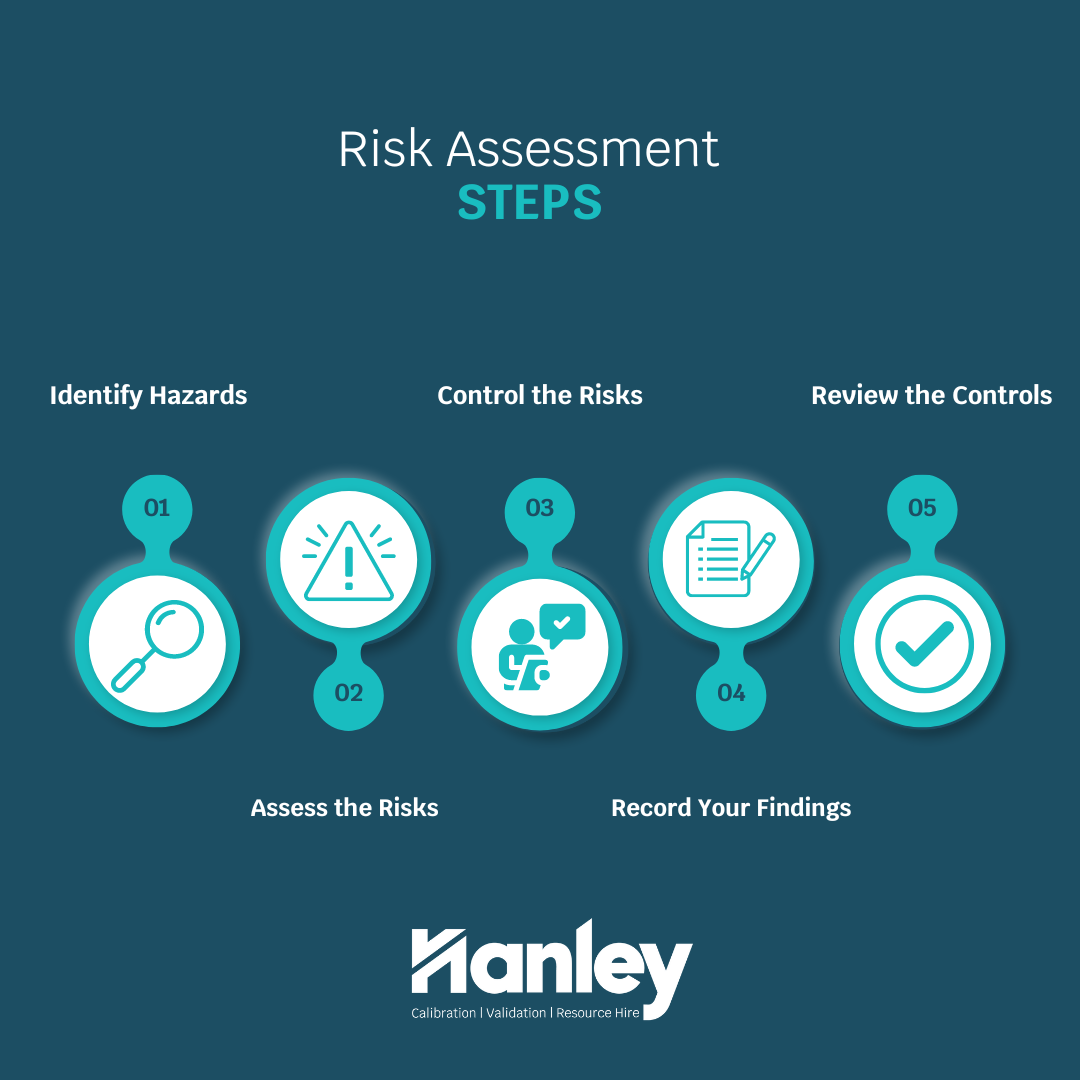
Risk assessment is the process of identifying what hazards exist, or may appear in the workplace, how they may cause harm and to take steps to minimise harm. Risk management is a step-by-step process for controlling health and safety risks caused by hazards in the workplace.
Risk assessment is not just a necessity but a critical component of strategic planning. It enables us to navigate uncertainties with confidence, ensuring long-term sustainability and success. By proactively identifying and managing risks, at Hanley we can protect our assets, enhance reputation, and maintain a competitive edge. By implementing a vigorous risk assessment process, this helps to safeguard the future of Hanley Calibration.

STEP 1: Identify Hazards – Look around your workplace and think about what may cause harm. Think about hazards to health, such as manual handling, use of chemicals and causes of work-related stress.
STEP 2: Assess the Risks – Once you have identified the hazards, decide how likely it is that someone could be harmed and how serious it could be.
STEP 3: Control the Risks – Look at what you’re already doing, and the controls you already have in place. Ask yourself:
STEP 4: Record Your Findings – significant findings can include:
STEP 5: Review the Controls – You must review the controls you have put in place to make sure they are working. You should also review them if:
While completing calibrations on an Auto-clave. A quick Risk Assessment highlighted that a temporary line going through the Technical Area was extremely hot. There were barriers in place to avoid contact with this line. However, while assessing a Pressure Transmitter for calibration, it was noted that the line it was connected to was also extremely hot. Our technicians had not been informed that any part of the system had gone live and they could not be sure if steam was still present or not. The Hanley Calibration Supervisor was notified. He in turn raised the issue with the System Owner. All Hanley personnel were stood down. It was later confirmed that steam was in fact, present in the line. A serious incident was avoided!